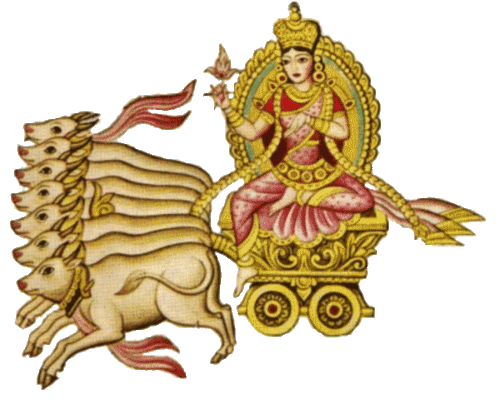Aldrick Strickland said:
Insults some more and then does an appeal to superiority. I hope you get over this thing called acting like a sane calm human and be like me, awesome.
So now im going to delete this and make your new post.
Jack- Yeah Sister, you are right. You gotta be careful! Especially with indian stuff that has been the most corrupted. But I did my research on this actually. It seems really awesome. Let me post some info and lets look into this together. I think you will actually like it!
This is actually a really cool Holiday!
Diwali, Deepavali or Dipavali is the Hindu festival of lights, which is celebrated every autumn in the northern hemisphere (spring in southern hemisphere).[5][6] One of the most popular festivals of Hinduism, Diwali symbolises the spiritual "victory of light over darkness, good over evil and knowledge over ignorance."[7][8][9] During the celebration, temples, homes, shops and office buildings are brightly illuminated.[10] The preparations, and rituals, for the festival typically last five days, with the climax occurring on the third day coinciding with the darkest night of the Hindu lunisolar month Kartika. In the Gregorian calendar, the festival generally falls between mid-October and mid-November.[11
In the lead-up to Diwali, celebrants will prepare by cleaning, renovating, and decorating their homes and workplaces.[12] During the climax, revellers adorn themselves in their finest clothes, illuminate the interior and exterior of their homes with diyas (oil lamps or candles), offer puja (worship) to Lakshmi, the goddess of prosperity and wealth,[note 1] light fireworks, and partake in family feasts, where mithai (sweets) and gifts are shared. Diwali is also a major cultural event for the Hindu and Jain diaspora from the Indian subcontinent.[15][16][17]
The five-day festival originated in the Indian subcontinent and is mentioned in early Sanskrit texts. The names of the festive days of Diwali, as well as the rituals, vary by region. Diwali is usually celebrated eighteen days after the Dussehra (Dasara, Dasain) festival with Dhanteras, or the regional equivalent, marking the first day of the festival when celebrants prepare by cleaning their homes and making decorations on the floor, such as rangoli.[18] The second day is Choti Diwali, or equivalent in north India, while for Hindus in the south of India it is Diwali proper. Western, central, eastern and northern Indian communities observe Diwali on the third day and the darkest night of the traditional month. In some parts of India, the day after Diwali is marked with the Govardhan Puja and Diwali Padva, which is dedicated to the relationship between wife and husband. Some Hindu communities mark the last day as Bhai Dooj, which is dedicated to the bond between sister and brother,[19] while other Hindu and Sikh craftsmen communities mark this day as Vishwakarma Puja and observe it by performing maintenance in their work spaces and offering prayers.[20][21]
Some other faiths in India also celebrate their respective festivals alongside Diwali. The Jains observe their own Diwali, which marks the final liberation of Mahavira,[22][23] the Sikhs celebrate Bandi Chhor Divas to mark the release of Guru Hargobind from a Mughal Empire prison,[24] while Newar Buddhists, unlike other Buddhists, celebrate Diwali by worshiping Lakshmi.[25][26] The festival of Diwali is an official holiday in Fiji,[27] Guyana,[28] India, Malaysia (except Sarawak),[29] Mauritius, Myanmar,[30] Nepal,[31] Singapore,[32] Sri Lanka, Suriname, and Trinidad and Tobago.[33]
Over the centuries, Diwali has become a national festival that is enjoyed by most Indians regardless of faith: Hindus, Jains, Buddhists, and Sikhs.
Hindus interpret the Diwali story based upon where they live:
In northern India they celebrate the story of King Rama's return to Ayodhya after he defeated Ravana by lighting rows of clay lamps.
Southern India celebrates it as the day that Lord Krishna defeated the demon Narakasura.
In western India the festival marks the day that Lord Vishnu, the Preserver (one of the main gods of the Hindu trinity) sent the demon King Bali to rule the nether world.
In all interpretations, one common thread rings true—the festival marks the victory of good over evil.
Non-Hindu communities have other reasons for celebrating the holiday:
In Jainism, it marks the nirvana or spiritual awakening of Lord Mahavira on October 15, 527 B.C.
In Sikhism it marks the day that Guru Hargobind Ji, the Sixth Sikh Guru was freed from imprisonment.
On the first day of Diwali, people consider it auspicious to spring clean the home and shop for gold or kitchen utensils.
On the second day, people decorate their homes with clay lamps and create design patterns called rangoli on the floor using colored powders or sand.
The third day is the main day of the festival when families gather together for Lakshmi puja, a prayer to Goddess Lakshmi followed by mouth-watering feasts and firework festivities.
The fourth day is the first day of the new year when friends and relatives visit with gifts and best wishes for the season.
On the last day of Diwali, brothers visit their married sisters who welcome them with love and a lavish meal.
Im Glad you posted about this. Sounds great. Happy Diwali.





